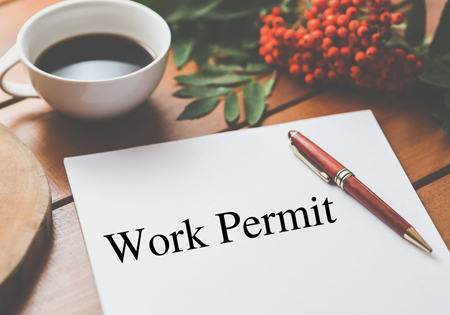The opportunity to work abroad can be a fantastic chance for workers to improve their abilities and acquire new experience. However, knowing whether a work visa or permit is needed is crucial to avoid legal issues.
Visas are endorsements of your passport which allows you to travel and into a foreign country. A work permit in contrast, can be described as an Employment Authorization Document that demonstrates the legality of working in another country.
Differences
If you are planning to work in another country, understanding the complicated legal regulations can be difficult. In order to make the process easier it’s important to know the distinctions between work visas and permits.
The visa permits an individual to travel into a country with certain reasons, such as travel, business or to study. However, an EAD or work permit (Employment Authorization Document) is granted to permit an international employee to legally participate in work for a specific employer.
Work permits and visas come with different conditions and terms that vary depending on the country. A work visa can be valid for a specific period of time however, a permit for work can be renewed if needed. Certain work permits also come with limitations on the number of times one can switch work, which could be difficult for someone seeking to change employers.
Eligibility
Visas and Work Permits come with many conditions that differ by nation. The criteria for eligibility is based on the kind of work being done and the length of time the permit or visa, and any additional legal requirements, such as education requirements.
It is essential to verify the work permit or visa conditions prior to applying for a visa, since the failure to comply with the guidelines could result in being rejected by USCIS. If you are rejected, it’s recommended to consult an expert and then reapply using the assistance from an experienced immigration attorney.
In particular, it’s unlawful to work within America. For instance, it is illegal to work in the United States without an EAD (Employment Authorization Document) that is issued by USCIS. It is a document that EAD is a picture ID which resembles the driver’s license. The EAD is only granted to those who meet certain criteria like students and asylum seekers.
Visa Application Process
The procedure for getting work permits and visas varies according to the country which you work in. Visas are generally granted to specific reasons and permit access to the country for a specific duration of duration.
Visas are available at the consulate or embassy of the country you are visiting. It is necessary to submit various forms of proof like your passport and proof of identification, as well as your employment information.
Obtaining work permit for expatriate is an identification card which proves the legality to be employed in the country you reside and work. The card is issued by USCIS and resembles the driver’s license. The document is also known by the name of an Employment Authorization Document (EAD).
Purpose
Work permits are needed in conjunction with a visa. They restrict what people can perform while they are in a different country. These permits typically require a college degree and previous work reports, or a professional “testimony” among other requirements.
Visas, on the other hand generally limit the activities you are allowed to participate in such as traveling to an event or carrying out business. It also differs depending on the country.
In the case of Singapore, a visa is required for those who wants to work as a confinement Nanny in Singapore. But, an US business can sponsor the visa of an employee who does not have an education through the Labor Conditions Application (LCA) and certification. The employer must can prove that there isn’t a qualified foreign worker working within the US for this job. The process can be more complex and time-consuming than applying for the visa itself.

Navigating Legal Requirements for Working Abroad
If you’re thinking of working abroad or have already done this, having a thorough knowledge of the distinction between permits and work visas will help you navigate the legal process. This can help you stay clear of misunderstandings or mistakes which could delay or impede the plans you have made.
The work visa typically binds the applicant to a particular employer and is in effect only the duration that this company employs the employee. It is therefore difficult to move jobs or places when you’re unhappy with the current position.
Ogletree Deakins’ Cross-Border Practice Group will remain vigilant about the challenges which affect both companies and individuals that work internationally, and we’ll update our blog when new events take place. We believe this article will help to achieve your goals in the workplace.